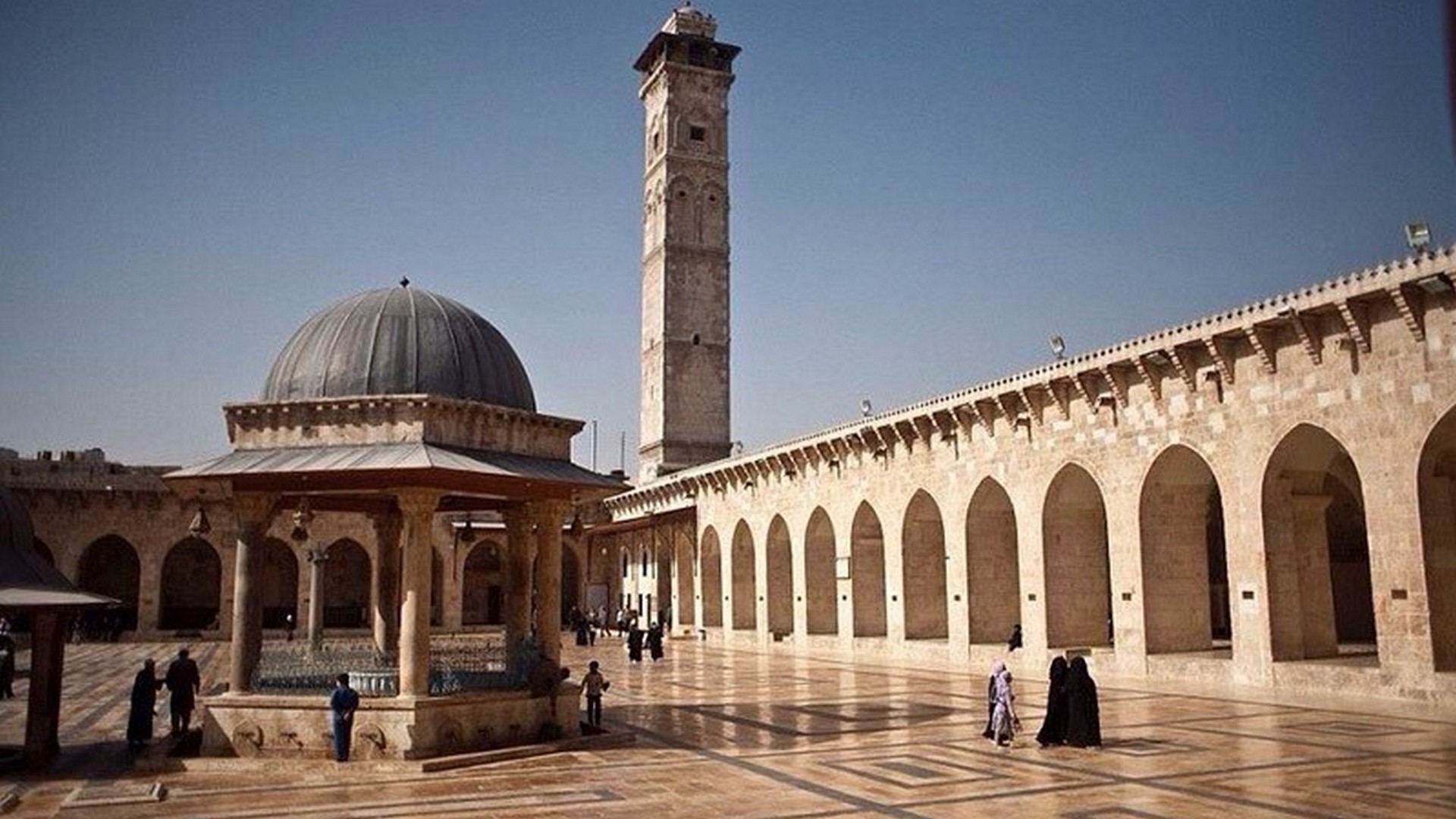Description
Property Name: The Great Umayyad Mosque (Aleppo)
Inventory No: 963-21-1
Date of infill of the inventory form: 2008-02-29
Country (State party): Syria
Province: Aleppo
Town:
Geographic coordinates: 36° 11′ 58.12″ N
37° 9′ 24.76″ E
Historic Period:
Year of Construction: 715, 11th – 13th century
Style: Umayyad, Mamluk, Seljuk
Original Use: Religious
Current Use: Mosque
Architect: Unknown.
Significance
The Great Mosque in Aleppo, which is also known as the Umayyad Mosque, was built on a site where a Roman temple and then a Byzantian church were founded earlier in 715, ten years after the foundation of the Great Mosque at Damascus that was similar in form and size. However, the mosque was destroyed so many times and nothing now remains of the original building. The oldest part of the mosque is its tall square-planned stone minaret of 1090, belonging to the Seljuk period. Rising in eight stages to a height of over 50m, it is distinguished by vigorous interlace in relief on its upper registers. The present structure of the mosque dates from a total reconstruction by Nur ad-Din in 1158, following a fire, and a partial reconstruction after the Mongol invasion of 1260. The courtyard of the mosque is famous for its black and white stone pavement that forms complex geometric patterns and its two ablutions fountains.
Selection Criteria
iii. to bear a unique or at least exceptional testimony to a cultural tradition or to a civilization which is living or which has disappeared
iv. to be an outstanding example of a type of building, architectural or technological ensemble or landscape which illustrates (a) significant stage(s) in human history
vi. to be directly or tangibly associated with events or living traditions, with ideas, or with beliefs, with artistic and literary works of outstanding universal significance
State of Preservation
Although the Great Mosque in Aleppo was built in 715, it couldn’t preserve its original structure due to natural disasters like fires, earthquakes, and man-made invasions. The present structure dates from a total reconstruction by Nur ad-Din in 1158, and a partial reconstruction after the Mongol invasion of 1260. Only the tall minaret of 1090, from the Seljuq period, is older. The mosque underwent renovation work in 2003, and the courtyard and the minaret are restored. Hence, in 2003, the mosque underwent a comprehensive restoration, including a new layout for the northern garden adjacent to the mosque. In 2005, al-Waqfiyya Library was installed on the site of a former underground parking lot located under the northern garden.
The minaret was destroyed during fighting in April 2013. In September 2012, a huge fire in the covered suqs damaged much of the eastern side of the mosque (the outer wall abutting the suqs and the eastern portico) and destroyed the library. This severe damage was visible by 2014 on satellite imagery in the eastern portico. In addition, the stone-tiled courtyard is partially destroyed. Lastly, the garden to the north has suffered moderate damage. The entrance passage to the suq from the eastern portico has been seriously damaged. The imagery of 2015 and 2017 show additional damage to the eastern portico. A section of the eastern wall and the northeastern corner of the mosque are destroyed. The images also show the protective work undertaken on the sundial in 2013, which was wrapped with sandbags and encased in cement to protect it. Smoke blackening is visible on the satellite imagery, affecting at least one of the galleries, and DGAM confirmed that fire also destroyed al-Waqifiyya Library (Kasmo, 2018).
References
Bloom, Jonathan M.; Sheila S. Blair. The Grove Encyclopedia Of Islamic Art and Architecture, Oxford University Press, New York, 2009.
Burns, Ross. Monuments of Syria: An Historical Guide, I.B. Tauris Publishers, London and New York, 1999.
Michell, George. Architecture of the Islamic World: Its History and Social Meaning. Thames and Hudson, London, 1978.
Kasmo, Ruba. FIVE YEARS OF CONFLICT: The State of Cultural Heritage in the Ancient City of Aleppo, United Nations Educational, Scientific and Cultural Organization, 7, UNESCO / UNITAR, 2018.


